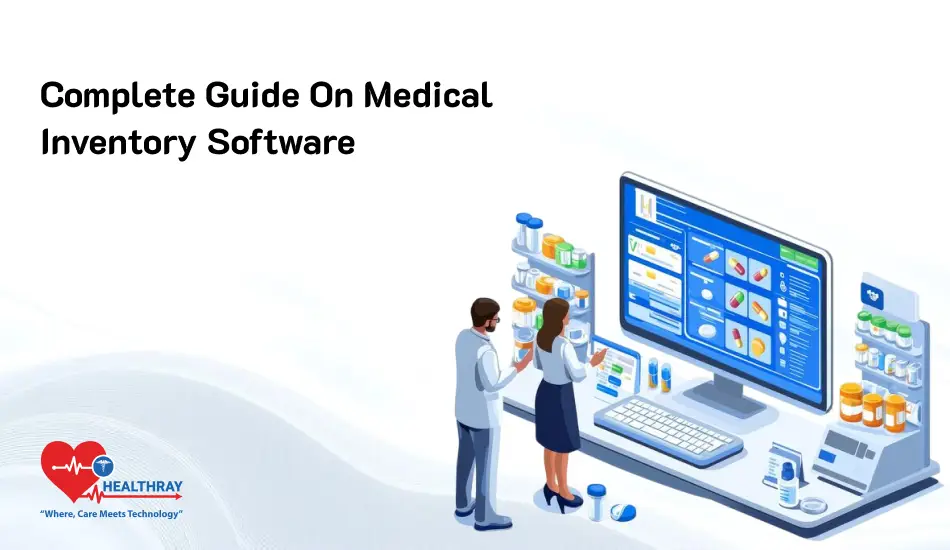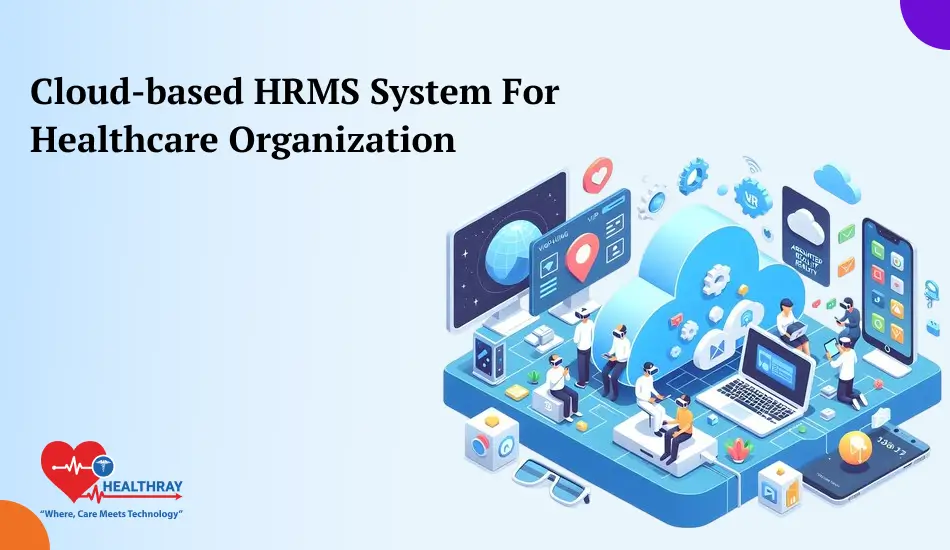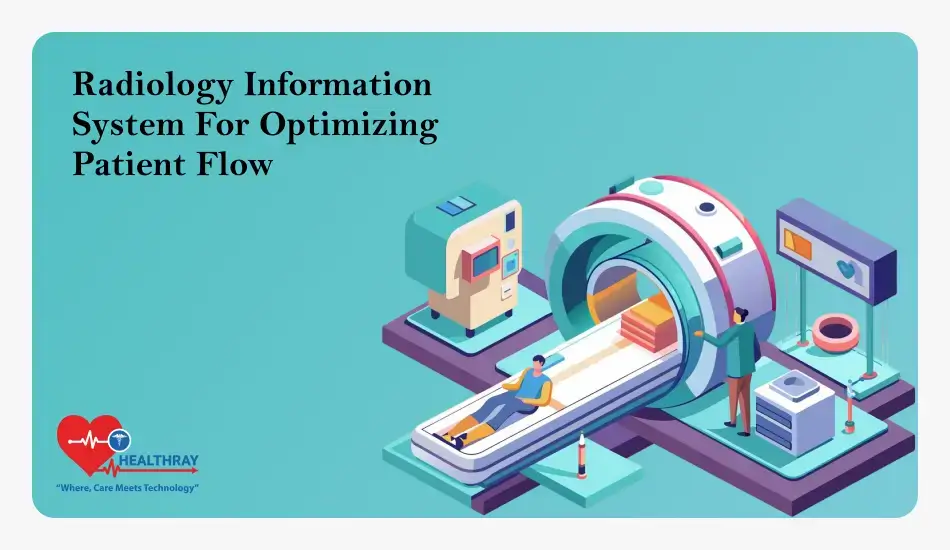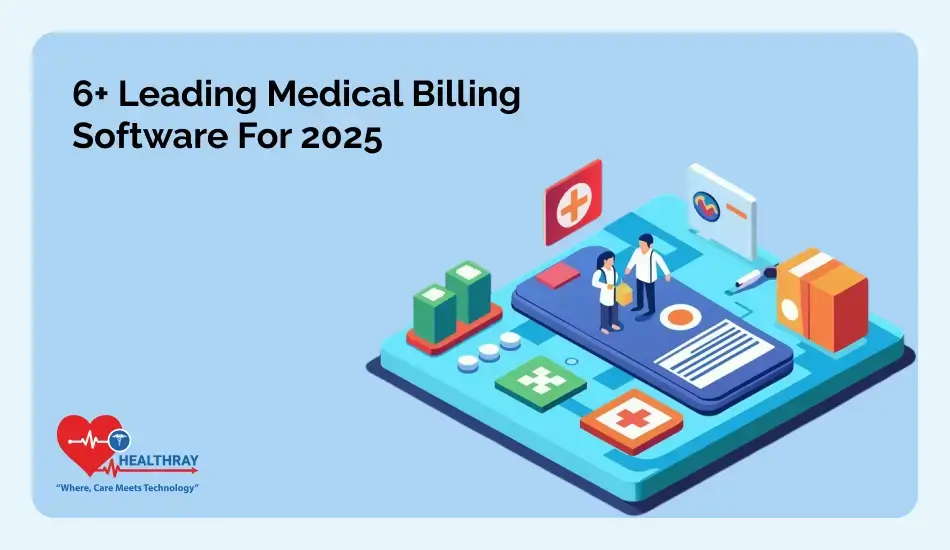Quick Summary: Several advantages result from integrating hospital workforce management software, such as effective staff scheduling, improved patient care, lower labor costs, and regulatory compliance. These systems help hospitals increase efficiency and provide high-quality treatment by optimizing workforce numbers and providing real-time analytics.
Introduction
Imagine two organizations in the healthcare sector that have the same resources. However, one does a great job providing a great patient experience and making a significant amount of money, while the other struggles with simple work management. What will probably set them apart? Management.
Healthcare facilities, with their own distinct requirements, are enhanced by committed professionals such as physicians, nurses, and managers. The workforce management tactics that a healthcare practice uses determine its performance. Workforce management is a crucial aspect that handles personnel and scheduling in order to maintain optimal organizational flow.
Handling the complexity of healthcare management and administration presents a lot of difficulties and frequently produces little. People are turning more and more to online medical case management software as a solution to these problems.
Inadequate management in the healthcare industry can have a negative impact on clinical results and cause financial losses. The increasing use of hospital management software services is highlighted by this fact.
Software solutions provide full assistance and a high return on investment, from meeting labor management demands to supervising back-end company administration. Hence choosing the right hospital management software development is necessary.
The purpose of this article is to examine the many advantages hospital workforce management software offers healthcare organizations and providers, highlighting the ways in which these products enhance patient care and operational effectiveness.
What Is Hospital Workforce Management Software?

An organization’s ability to run smoothly and efficiently depends on its ability to manage a workforce, particularly in the healthcare sector. This improves the standard of patient care while also fostering the expansion of a healthcare organization.
Any mistake in treatment or medicine can have a serious negative impact on a patient’s health in the healthcare industry, since patient care is the main service provided. Hospital medical billing staff overload is frequently blamed for these errors, which cost the sector money in terms of responsibility and reimbursements.
Medical employees are the major resource of healthcare organizations. Moreover, the electronic health record software transfers the workload of clinical employees into their platform. It has uncountable properties like amalgamation of patient data, improved medical services, revenue cycle management, managing extensive patient information, and appointment scheduling software.
Employees in the healthcare sector are not able to take advantage of the standard 9 to 5 workday, unlike those in other businesses. Medical professionals must remain on the scene to give patients emergency care in the event of an accident, delivery, heart attack, or other serious situation.
Furthermore, circumstances might come up where a surgeon who has done a major operation would not be available early the following day. Hence in addition to physicians and nurses, additional professionals that are required to work during crises include insurance verifiers, radiologists, claims processors, and pathologists.
It is difficult to manage these situations effectively at a large hospital with several departments if traditional pen-and-paper procedures are used. Hence for this reason, individuals look for online alternatives to hospital case management software. It is essential to have a digital workforce management system.
An interface for hospital workforce management software includes functions like tracking current treatment cases, managing attendance, keeping an eye on case results, and much more. This digital solution guarantees effective resource management, simplifies operations, and eventually helps to provide high-quality healthcare services.
What Key Features Should You Seek in Solutions for Healthcare Workforce Management?

Hospital workforce management software’s efficacy and fit for healthcare organizations are influenced by a number of important aspects. Here are a few important things to remember:
Usability:
An interface that is easy to use is necessary for efficient human resource management. There should be few clicks to locate information or move between features in the app. Improvement in utility with features including fast loading times, an intuitive taskbar, and automated alerts. Therefore, it improves hospital operations.
Safety:
Security is crucial, particularly in the healthcare industry where private data is present. Respecting industry-specific legislation and governmental rules is essential. Therefore security measures must stop breaches that might jeopardize other associated systems since hospitals frequently run integrated systems. Consequently, it improves patient safety.
It embeds with the advanced practice to shield with security guidelines such as encrypted information, continuous tracking, and following clinical guidelines. Additionally, it secures patient portals, medical billing software, pharmacy management system, and other integrated software.
Mobile Programme:
It is beneficial to have a mobile-friendly solution as it enables administrators to operate remotely. Hence users can examine data, check messages, access files, and complete activities while on the road thanks to mobile compatibility, which improves workflow and productivity all around.
Analytics and Reporting:
Detailed reports on parameters such as clinical results, feedback, leave requests, and attendance must have strong reporting tools. Hence analytics features expose important information for well-informed decision-making and offer insights into worker operations.
Hospital management systems provide strong analytical reports, depicting the important and concise part of the entire information. Therefore, it assists in making smart decisions.
Staff Assignment:
Staff scheduling that works is essential for healthcare companies. Viewing timings, shifts, and needs is made easier for physicians, nurses, and staff members using scheduling software, especially when it has automatic scheduling features.
Managing your workforce with hospital management system software. Moreover, senior healthcare professionals directing and delegating tasks to other departments. Assist to plan the whole day of healthcare staff and examine them correctly. Therefore, junior healthcare teams have been controlled by their seniors more accurately.
Combining Current Health Systems with Integration:
It is essential that any existing third-party medical software integrates seamlessly. The programme needs to function seamlessly with patient interaction tools, billing software, and medical coding. Both the patient experience and overall productivity are improved by this integration.
What Are The Benefits Of Healthcare Workforce Management?
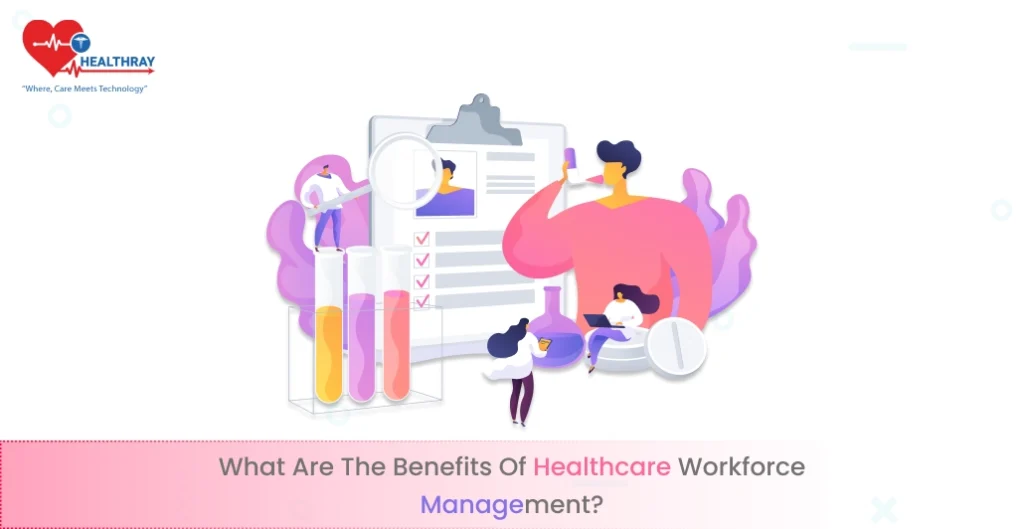
Digital clinical platform seamlessly captures patient records, improves the medical billing procedure, increases data security, creates electronic prescriptions, and contributes to task management. Therefore, it simplifies the clinical process and requires lower efforts. This uplift the workforce satisfaction level and track their work efficiently.
Solutions for hospital staff management provide a number of advantages that are essential given the dynamic nature of healthcare operations:
- Monitor Worker Time:
Healthcare activities are unpredictable, thus hospital workforce management systems efficiently monitor each employee’s arrival and departure hours. The programme lessens administrative load and helps in monitoring working hours, shifts, and leave patterns by generating detailed data on employee timings across multiple hours, shifts, and departments. One can also take help of a robust hospital visitor management software for monitoring effectively. Additionally, it minimizes work through the embedded systems like medical equipment management software, patient scheduling system, inventory management system, and other.
- Optimising Staffing:
Healthcare workforce numbers are difficult to manage because of the erratic nature of the workload. Hospital staff management systems help in precisely estimating the number of workers needed, avoiding problems with excessive or insufficient staffing that can affect productivity, workload, and patient satisfaction.
- Effective Payroll Administration:
Payroll calculations occur automatically by hospital administration software, which keeps track of worker productivity, working hours, and leave requests. By reducing mistakes and doing away with the requirement for specialized accounting staff, this streamlines payroll procedures in settings where set work hours are unusual.
- Adherence to Regulations:
During healthcare actions, compliance is vital. Such as, HIPAA “Health Insurance Portability and Accountability Act”. That is why a hospital workforce management software must include and enforce regulations respecting areas such as minimum wages, maternity leaves, leave requests and other staff matters from the case. This gives a platform that can professionally monitor employees’ conduct within the given time schedule.
- Collaboration:
Hospital work force management solutions are capable of integrating with other technologies like electronic health records to make it possible for them to operate optimally on a daily basis. Health care providers can do without any physical infrastructure, hardware or specialized IT staff by adopting cloud-based technologies which provide scalable and efficient solutions in this respect.
In combination, these features enable healthcare institutions to function effectively ensuring adequate staffing, adhering to regulations and managing human resources properly. This enhances patient care, improving patient outcomes, accurate diagnosis, and improves operational efficiency.
Why Should Companies Invest In Hospital Workforce Management Solutions?
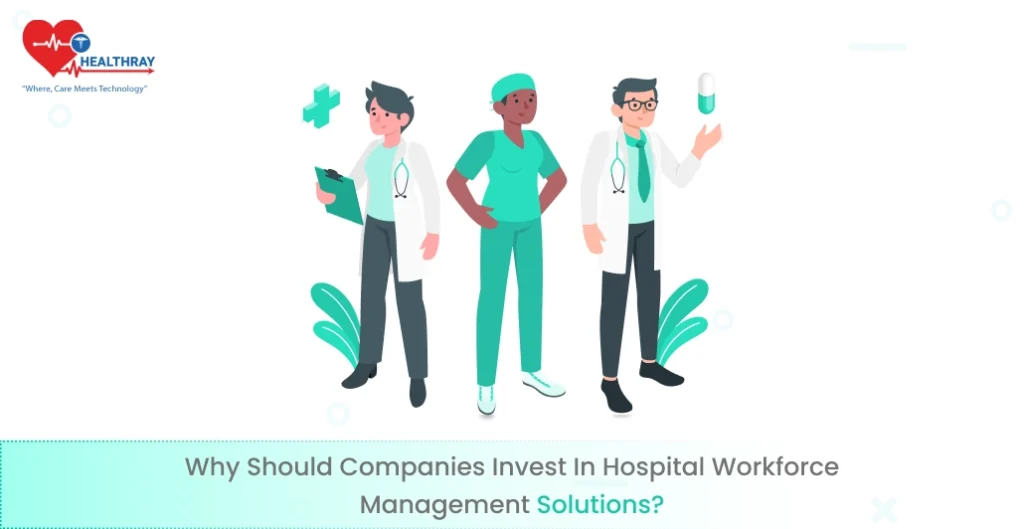
There is a severe lack of qualified healthcare workers, particularly healthcare providers and nurses, in the US and many other nations. By the end of this decade, there may be a shortage of hundreds of thousands of medical professionals, according to the Association of American Medical Colleges.
Studies show a growing tendency over time in the nursing shortage, which is especially noticeable in that field. The healthcare sector also depends on non-clinical workers, including financial advisors, insurance claimants, and medical coders, in addition to clinical employees.
Roughly 40% of Americans live with a chronic illness, and an equivalent proportion experience anxiety and sadness. The COVID-19 epidemic has made these problems worse by making professionals scarcer and driving up labour costs in healthcare systems.
Telehealth services have grown in popularity as a reaction to these problems. However, some patients still choose in-person therapy over virtual alternatives. The healthcare business is facing substantial issues due to rising expenses and a scarcity of personnel, as evidenced by a 60% rise in labour rates. Look online for hospital case management software that elevates your online presence.
As the need for effective staffing has grown, researchers are looking into ways to reduce administrative duties, such as developing hospital management software. By combining crucial data and features, the use of such software may enhance hiring procedures, recruiting, scheduling, and retention tactics. Thus, important issues facing the healthcare sector may be resolved by minimizing staff turnover, tracking chronic diseases, and maximizing the use of human resources.
Seeking assistance with the development of hospital workforce management software? Discover how Healthray can provide support.
Healthray is a dependable partner in the development of hospital personnel management software. We use our proficiency in healthcare technology to provide tailored solutions. These solutions enhance workforce efficiency, simplify workflows, and increase output in healthcare establishments.
We are aware of the particular difficulties hospitals face in effectively managing their workers. Hence Healthray’s software enables you to ensure that the appropriate personnel is available when needed. This enhances patient care and saves labor expenses. Additionally, it supports health tracking and provides business intelligence reports. Our real-time insights enable hospitals to make data-driven, well-informed choices.
For reliable hospital visitor management software and hospital workforce management software, pick Healthray as your partner. With the help of our technology, your organization will be able to deliver top-notch medical care quickly and effectively.
Conclusion
To fulfill the increasing expectations in the healthcare industry, ongoing technological improvements are crucial. Medical institutions rely on hospital workforce management system software to provide patients with accurate and optimal care. The healthcare software assists in coordinating and managing various aspects of hospital staffing and operations efficiently. This approach helps healthcare organizations save money and make the most use of their resources.
At Healthray, we offer the best labor management solutions possible that guarantee effective use of available resources. Our system facilitates setting operational pay, managing payroll, scheduling, and handling leave requests.However it also enables effective time management, provides advanced medical facilities, and improves patient outcomes. We are your all-inclusive workforce management solution. Our goal is to increase company productivity and efficiency at a reasonable cost.


